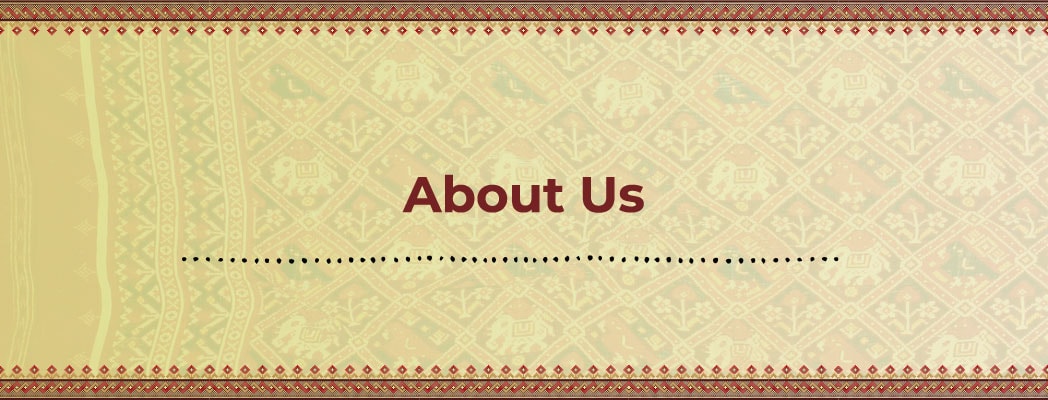
Patola weaving has been going on since the 11th century in Patan after king Kumbharpaland as known in the history, there were 700 families of weavers who carried this legacy in Patan. But since 1965, only four Salvi families are continuing the manufacturing of this traditional art in Patan. One of these 4 families is of the 76 years old Vijay Sevantilal Salvi Patolawala and his family. We are one of the oldest and eldest among the Salvis Families who are manufacturing Patan Patolas and are catering this world with creative and unique Patola designs.
Shri Vijay Sevantilal Salvi started learning and working in manufacturing of Patolas from the mere age of 15 years and is the eldest among the Salvi families who is still in the weaving business. He is one of the key members of the Patan Patola weaving community and has mentored and is still guiding almost all the Patan Patola manufacturers and weavers in and around Patan!
Groomed under his shadow is his Grandson; the young weaver and entrepreneur Naman Sandesara. He is a B.E. (IC) engineer who while modernising with the world was also fascinated with the ancient legacy of Patola making and wanted save the art from being extinct. So he played a major role in reviving his maternal father’s hereditary business. Since 11th century, Naman is believed to be the first outsider who is believed to have the potential and was honoured with the inheritance of the prestigious art form of Patolas manufacturing by the Salvi community. And with the true leader Vijay Sevantilal Salvi guiding him constantly, Naman is spearheading the business into the new direction where he wishes to make the Patola art more varied and relevant to the today’s millennial generation!
Art of Manufacturing Double Ikat Patola Sarees came into existence before the age of machinery by “Salvi Caste“, even today, the Salvi Families have continued to manufacture this unique hereditary art-form from getting extinct. The name SALVI is derived from ‘Sal’ (Sanskrit for loom) and “Vi” (“V” shaped rosewood sword which are used in a Patola loom for weaving).
Even today we could see long straight streets and surroundings of Salviwado in Patan which were especially laid for stretching out long wrap threads of Patola yarn. Various Designs of Patola are seen in the carved stone panels in one of the famous World’s Heritage site “Rani-Ki-Vaav”, (Queen’s Step well) in Patan
Patola also appears in the accounts of travellers’ from Tavernier (17th century) to Ibn Battuta (1342), and many others travellers worldwide. Correa (1523) speaks of Patola silk which were highly priced. Double Ikat Patola saree were also mentioned in letters from East India Company dated back in year 1616. Patola’s are still kept in many museums as a unique handcrafted art.
The Patolas are produced from thousands of years by the same process as it was before till today. No technician/weaver/designer is in position to make a single percent modification in the technique and the process of preparing of Patola, as it is a special technique.
From a mention in the Kalpsutra, a 2000-year-old Jain holy book, to carvings in the Ajanta caves, and numerous folk tales in different languages – from Gujarati to Telugu, the Patola sarees make for a fascinating subject for many people around the globe. In fact, it took 34 years of constant research for two Swiss writers, Alfred Buhler and Eberhard Fischer, to pen a book The Patola of Gujarat (Double Ikat in India). The book was published in 1979.